Easy indoor plants – 10 plants for beginners
Looking for easy indoor plants? We have rounded up the best varieties for beginners
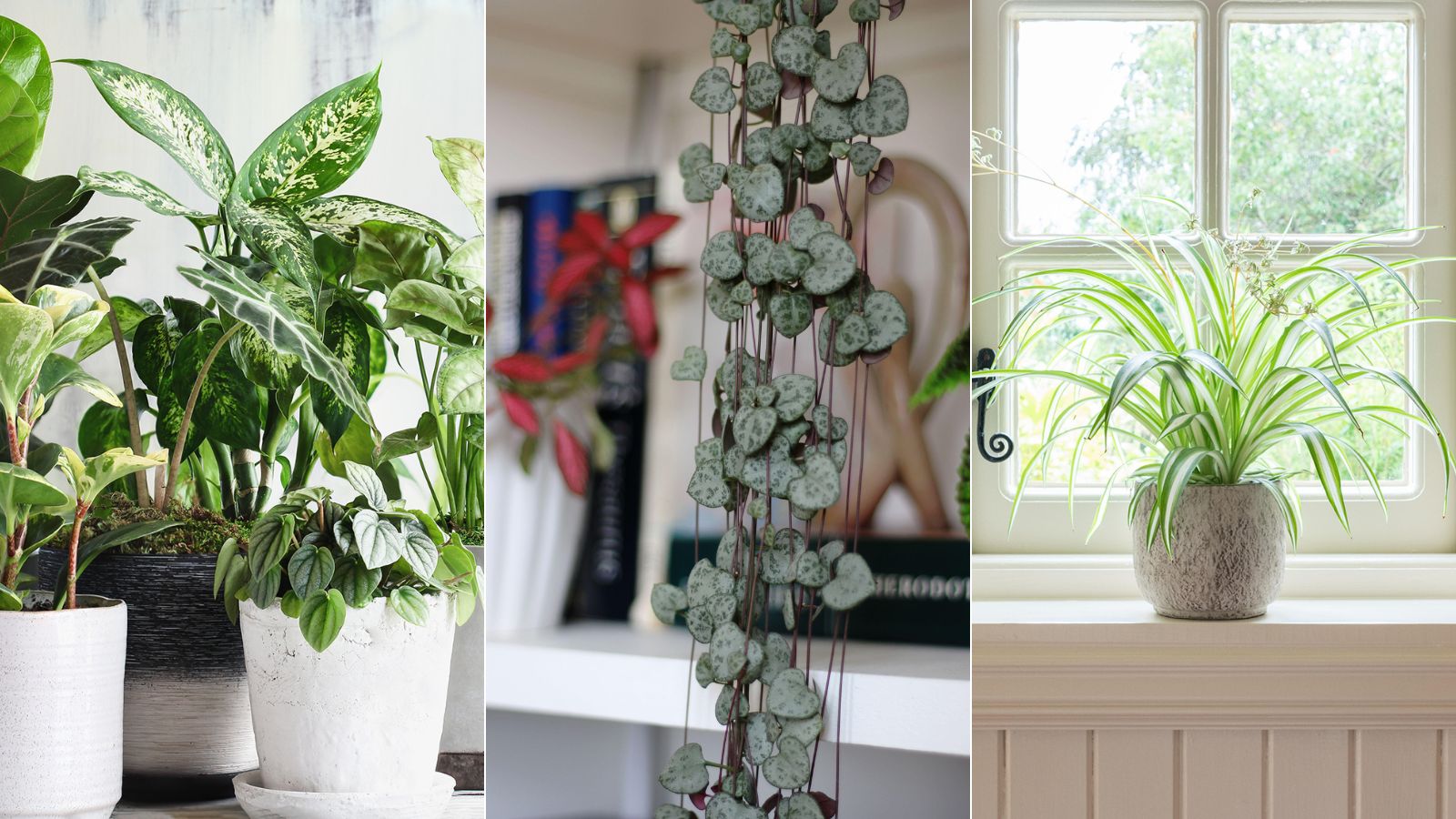

Looking to fill your home with lush, easy indoor plants? Well, rest assured we’ve compiled this expert guide especially for you so you can achieve the indoor jungle you long for without any stress or green fingers needed.
Often seen as tricky and demanding, many of us have long been put off from keeping houseplants but after spending much more time at home (thanks COVID-19) we are increasingly appreciating the benefits of being surrounded by the best indoor plants.
‘Not only do indoor plants enhance the overall appearance of a space, but studies show they boost moods, increase creativity, reduce stress, and eliminate air pollutants – making for a healthier, happier you,’ says Eliza Blank, founder of The Sill.
The key to getting indoor plants to thrive is to choose the right plant for the right spot in your home. Make the right choice and most of the hard work is done for you. Tempted to take the plunge? Check out these ten easy-to-grow indoor plants.
Easy indoor plants to grow
Find out which easy-to-grow indoor plant is right for you and your home. Start with one and continue decorating with plants to create your indoor jungle. It’s really not as difficult as you think.
1. Ponytail Palm or Bottle plant
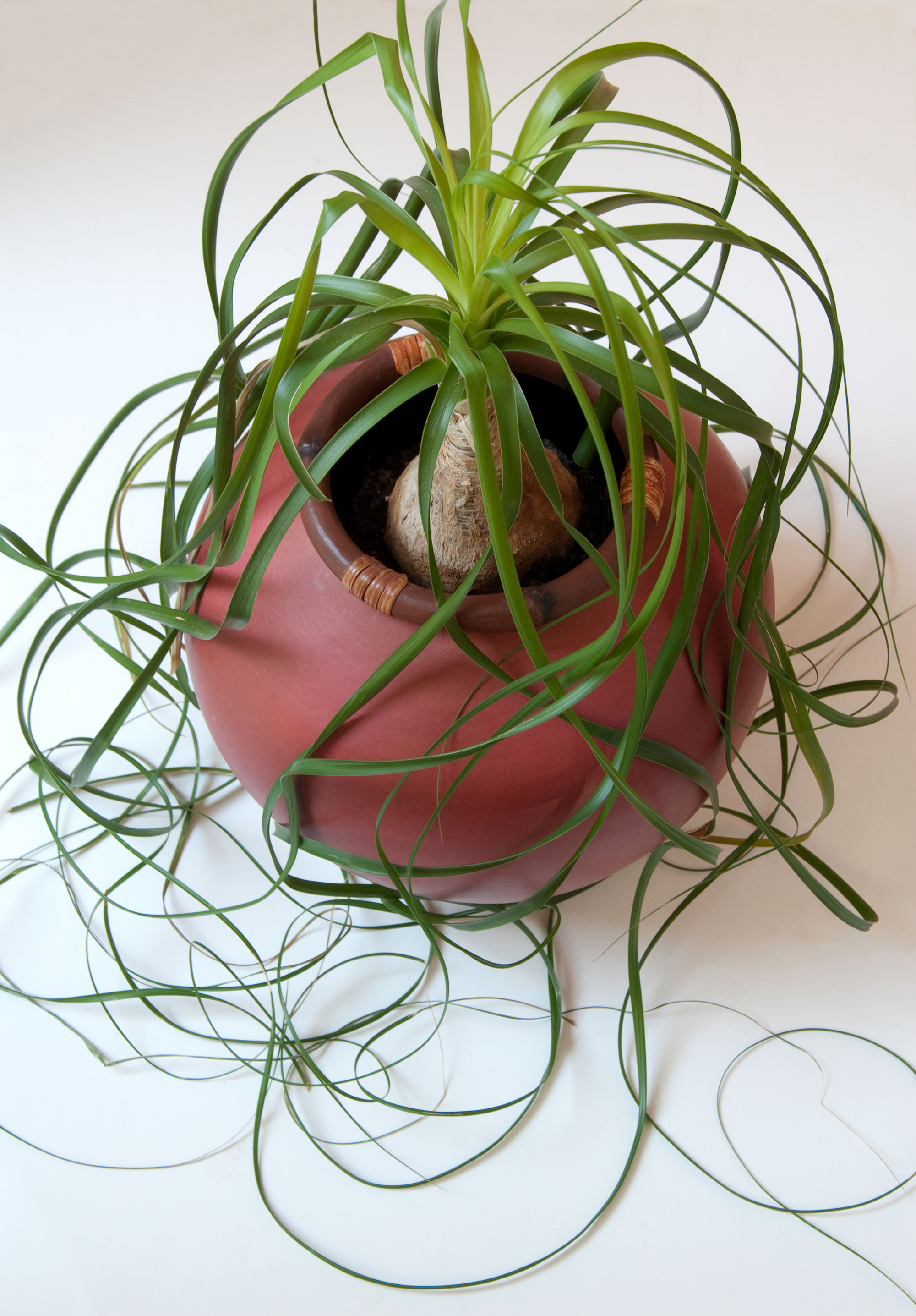
A quirky indoor plant that not only looks amazing but is happy to be neglected. Able to cope without water for weeks or months on end, it’s perfect for busy plant parents or those who are just plain forgetful. They are also extremely long-lived – with the same plant lasting for decades. Whilst they reach heights of 20 feet (6m) in the wild, they take their time to top 3ft (90cm) indoors.
Not really a palm or tree at all, this plant is a member of the Agave family and can store water in its bulbous trunk. Fine green hair-like leaves emerge from the top of the trunk in a fountain-like fashion and add movement and softness to the sculptural silhouette. Native to Mexico, they need a dry, bright position out of direct sunlight and free-draining compost. Never leave them sitting in water as they will quickly rot, instead water them every three or four weeks when the top couple of inches of compost are dry. Ponytail palm are also one of the best pet-safe indoor plants – ideal for homes with curious cats or dogs.
2. Spider plant
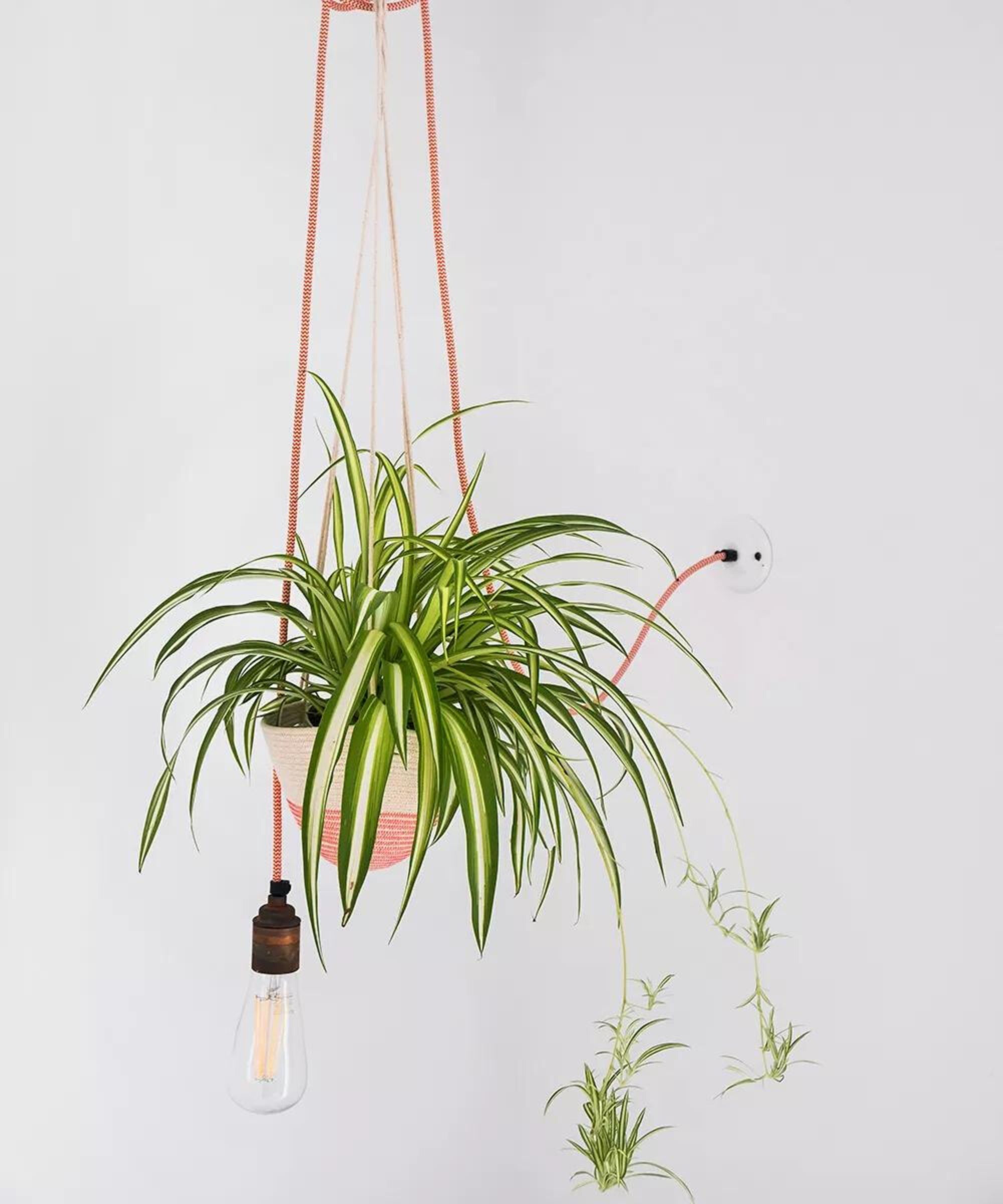
Everyone loves a spider plant, not just for its mass of stripy leaves and laidback attitude but for its easy-going nature too. One of the easiest air-purifying plants to grow at home, there are plenty of benefits of spider plants: they are reported to bring good luck with them and can even thrive under artificial light too.
‘They don’t like draughts but do need some sunlight,’ says gardening and plant expert Fiona Jenkins, at MyJobQuote, ‘so place them away from doors and windows but where the sun can still reach the plant. And don’t let temperatures drop below 44.6°F in the room where they are positioned.’
Water regularly during the spring and summer growing period and occasionally through fall and winter. Plant up in pots and place on a high shelf or windowsill or display in hanging planters. Unlike many other indoor plants, Spider plants are non-toxic making them a great choice of pet-friendly houseplants and perfectly safe around young children.
3. Bird of Paradise plant

Also known as strelitzia, the bird of paradise looks as though it should be a complex plant to grow, but in fact, it is surprisingly straightforward. ‘The bird of paradise is one of the most beautiful tropical houseplants thanks to its distinctive deep blue and florescent orange flowers that resemble a bird flying,’ says, Patty Willems from elho. ‘The South African native adds the perfect touch of exotic flair to the home and it’s relatively easy to care for too. This lush and leafy character favors light, warmth, and a humid atmosphere, so remember to mist its leaves regularly. It also needs plenty of space as its leaves can often grow to two meters tall!’ One word of caution, bird of paradise is one of the plants you should never keep in the bathroom.
When it comes to flowering, the strelitzia plant must be at least three or four years old, so patience may be needed. They flower in late winter and spring and prefer their roots to be slightly pot-bound before producing any flower spikes. Feeding regularly during the growth period with a low-nitrogen, high-phosphorus, and potassium fertilizer will also help.
4. Monstera
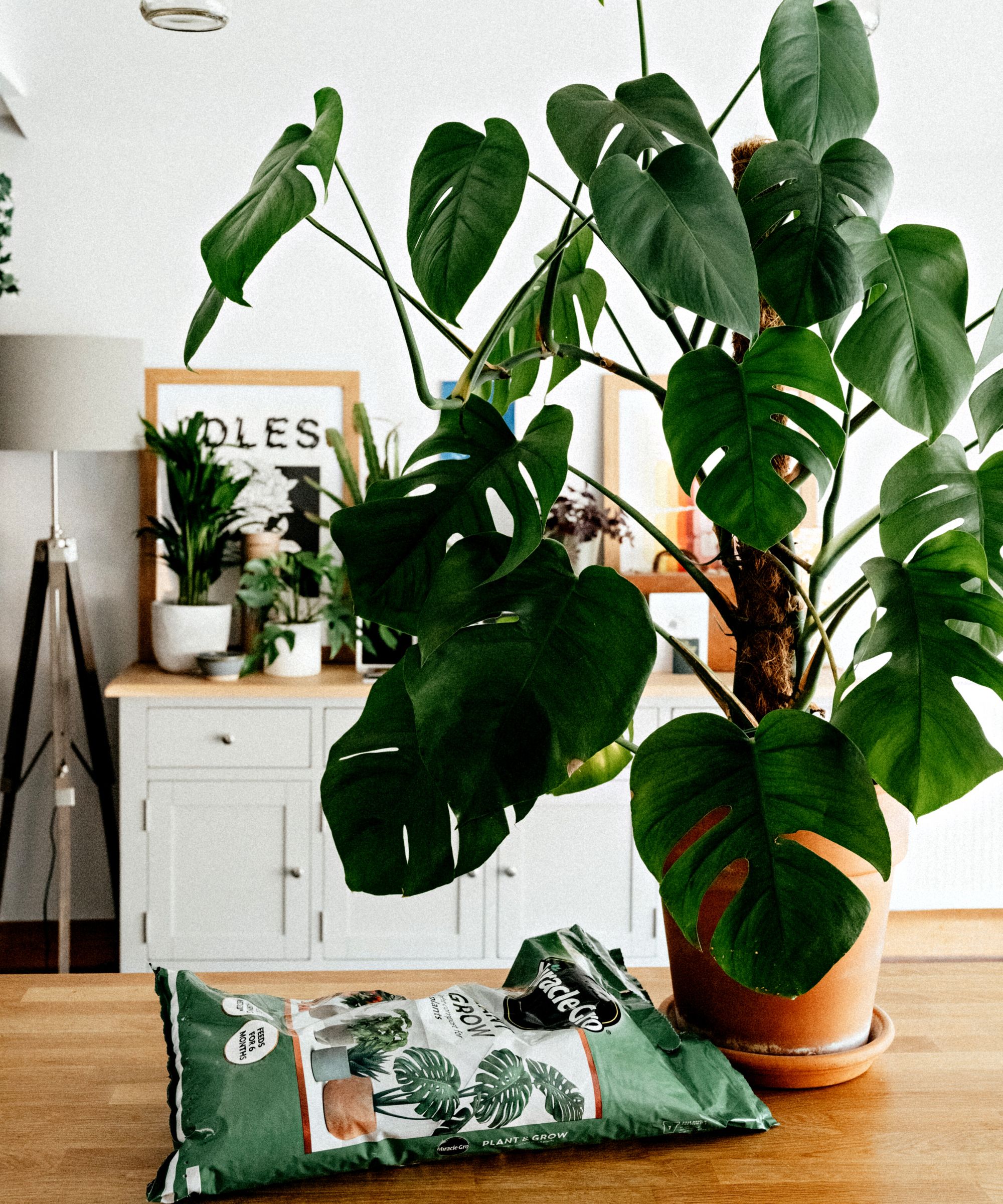
Incredibly forgiving and simple to care for, these large plants can cope with some over or under-watering and, in most cases, are pretty quick to recover. Preferring high-humid conditions with bright, indirect light they thrive well in a steamy bathroom, kitchen, or living area.
‘Monstera, also known as the Swiss Cheese Plant, are brilliant tropical houseplants with lush green and distinctive leaves,’ says Scott Perkins, houseplant buyer at Hillier Garden Centres. ‘Originating from a natural jungle habitat, Monstera are luscious in form and are becoming increasingly popular thanks to their artistic appearance. As the Monstera matures, its leaves will split and develop holes, creating a graphic look suitable for any home.’
Neither tree nor shrubs, these leafy giants are in fact climbers with aerial roots so do need to be trained up moss or coir-covered poles to mimic the trees they cling to in the wild. They are easy to propagate too and will provide several smaller plants, that can be potted up separately, in a relatively short time. Find out when to repot monstera with our expert guide.
5. Anthurium
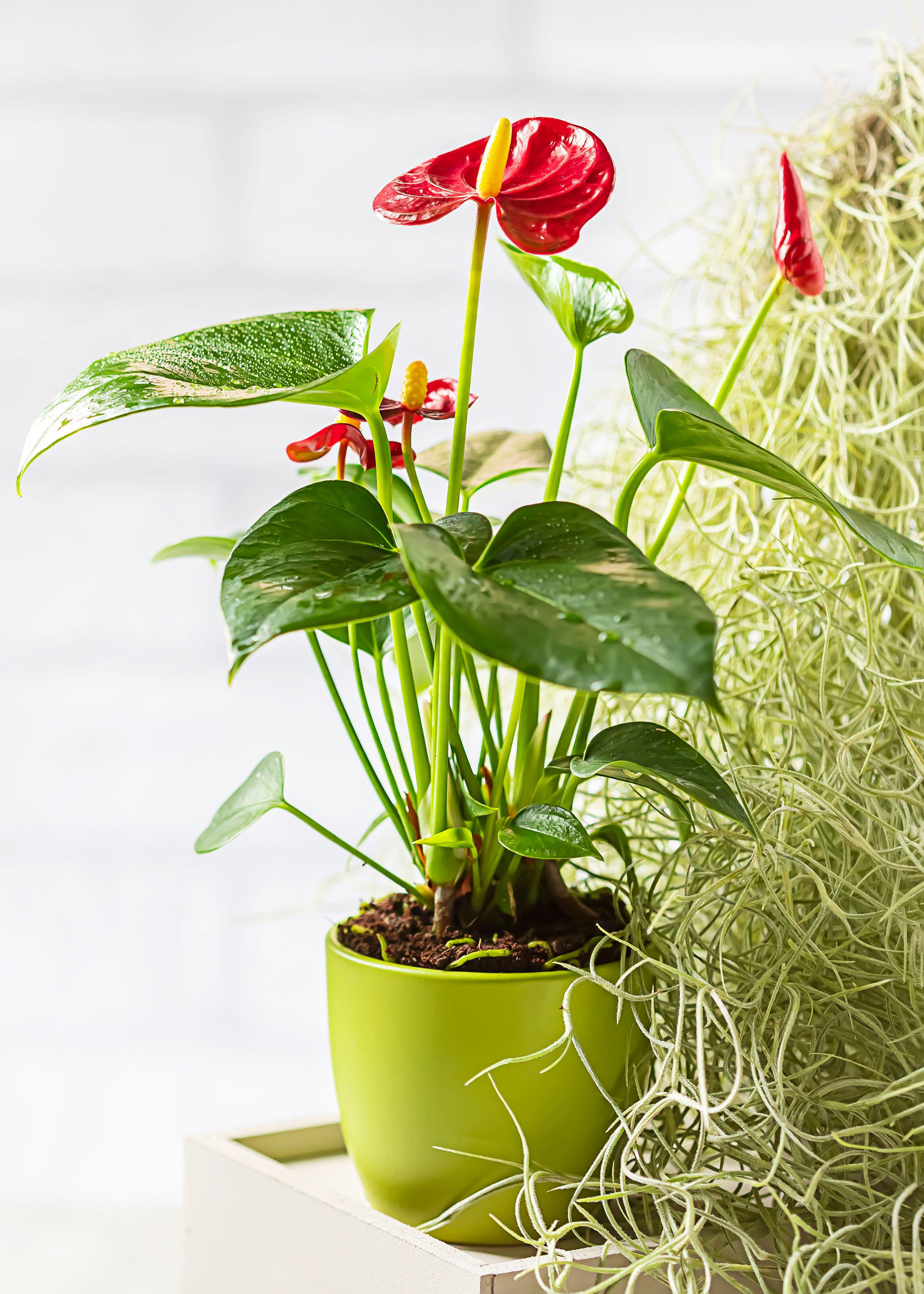
Instantly recognizable for their bold, curious blooms and large glossy leaves, exotic Anthurium are easy to look after. One of the best indoor flowering plants, it’s intriguing to learn that the flower is actually the tall spiky bit in the center of the ‘spathe’, which is a brightly colored, modified leaf with the purpose to attract insects.
Patty Willems from elho continues, ‘The anthurium is a beautiful plant that brings a healthy splash of color into the home. Also known as the flamingo flower, anthuriums can bloom all year when given the right care, so the unique heart-shaped spathes can flower in an array of stunning shades, including red, white, pink, and green, every month.’
Originating from South America and the Caribbean, it's no surprise that these plants are happy in most homes. ‘To keep them happy and healthy, anthuriums need bright, indirect light and should be planted with a well-draining potting mix, which can include things like compost, perlite, sand, moss, and coconut husk,’ continues Patty. ‘This type of potting mix enables enough air and water to flow through the pot and allows for optimum water availability and healthy root development.’
6. ZZ plant
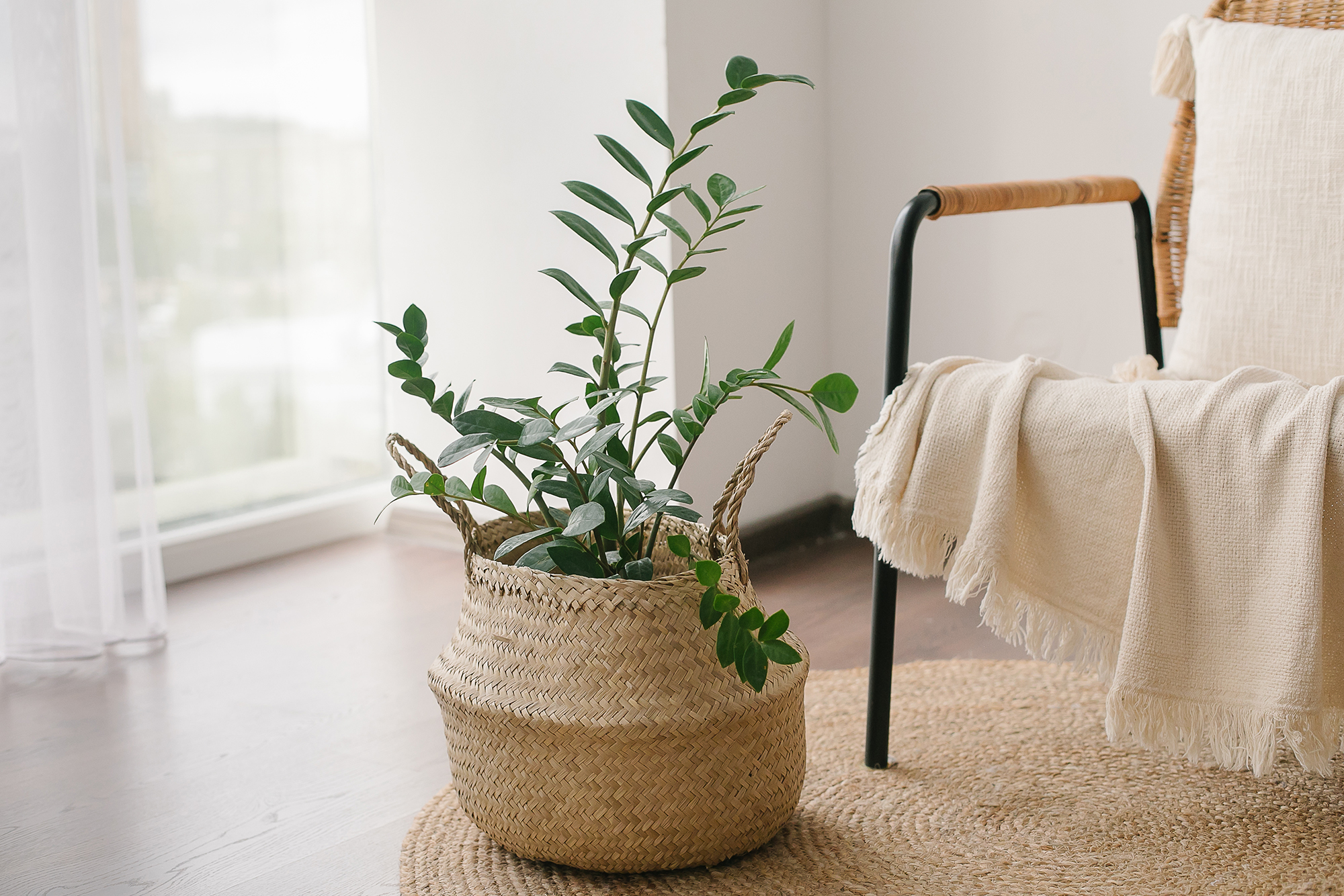
Perfect for first-time plant parents, the ZZ or Ric-Rac plant is virtually indestructible, thriving on neglect. Able to survive with very little water and happy in relatively shady spots, this distinctive multi-branched plant with its dark green pointy leaves, makes it one of the toughest indoor plants around – for this reason it is one of the best winter houseplants. Ideal for hallways and bedrooms, where light is scarce.
‘The Zamio, or ZZ Plant, really offers a perfect solution for any newbie plant owner,’ says Greg & Morag Hill, the founders of The Little Botanical. ‘With its super hardy leaves and a willingness to be somewhat neglected! A Zamio can last for many weeks (if not months) with no water and is pretty happy to be placed in a dark room too. This plant is native to Africa and is a real beauty.’
7. Snake Plant or Sansevieria
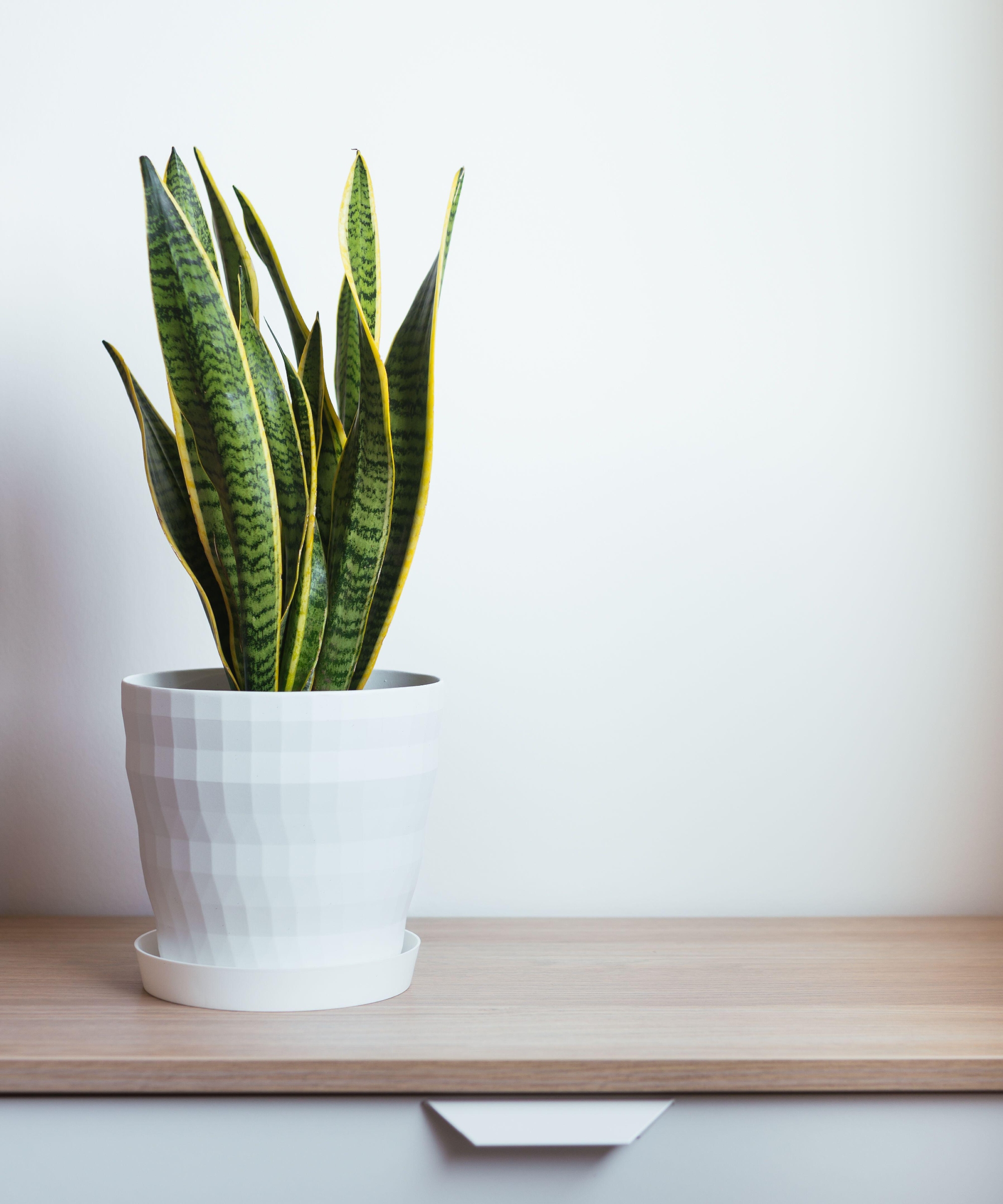
With their tall twisting sword-like leaves and stripy markings, snake plants are instantly recognizable and make impressive indoor plants. With a compact footprint and upright habit, they are ideal for positioning in corners, at entryways, and in front of north and east-facing windows without obscuring the view. A natural air purifier, snake plants are one of the best bedroom plants, they can convert carbon dioxide into oxygen during the night, aiding sleep.
‘Snake plants don’t require much watering at all over winter,’ says gardening and plant expert Fiona Jenkins. ‘They’re susceptible to root rot, so be sure that the compost is completely dry before watering. Watering in a bath or sink is ideal, so you can let the water drain out before placing back in its usual position. They’re not as sensitive to dry air or draughts, so they don’t need misting. But snake plants do like as much indirect sun as possible. Wiping their leaves to prevent dust build-up will help with this.’
Snake plants are also one of the easiest houseplants to grow from cuttings, so if you have a friend who already has this beautiful plant
8. Dracaena Deremensis or Dragon Tree
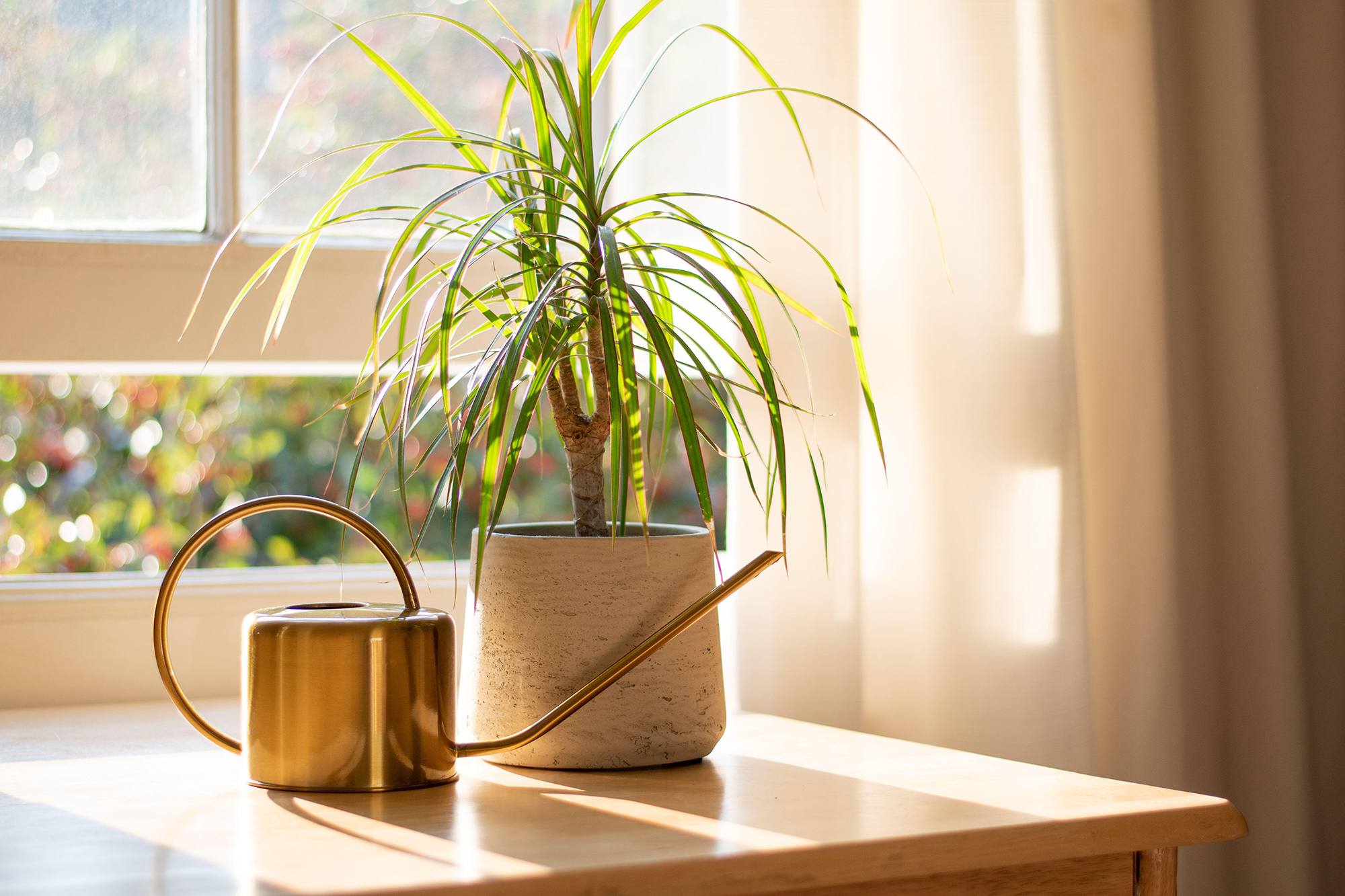
On the hunt for a real statement indoor plant? Try the Dragon tree, one of the best indoor trees. Available as single or multiple potted canes, each are topped with a mophead of strappy leaves, creating an architectural yet fun feature. They are also one of the few tree-like indoor plants that can withstand low-light conditions, making them super useful for adding height and interest to almost any space.
Coming from Africa where they are often used for creating hedges and, more traditionally, for marking sacred sites, they are pretty fast growing – up to 42ft (15m) but thankfully grown potted and indoors they only achieve a modest 4-5ft (1.3-1.5m).
‘Water once every 10 days and only once the soil is dry on the top,' say Greg and Morag Hill, founders of The Little Botanical. ‘Remove any brown leaves to encourage new growth. Check the soil regularly. Dracaenas don’t fare well if they are overwatered.’
Choose from stunning varieties with deep green glossy leaves or those striped with silver, lime, red, and pink for a more decorative option.
9. String of Hearts
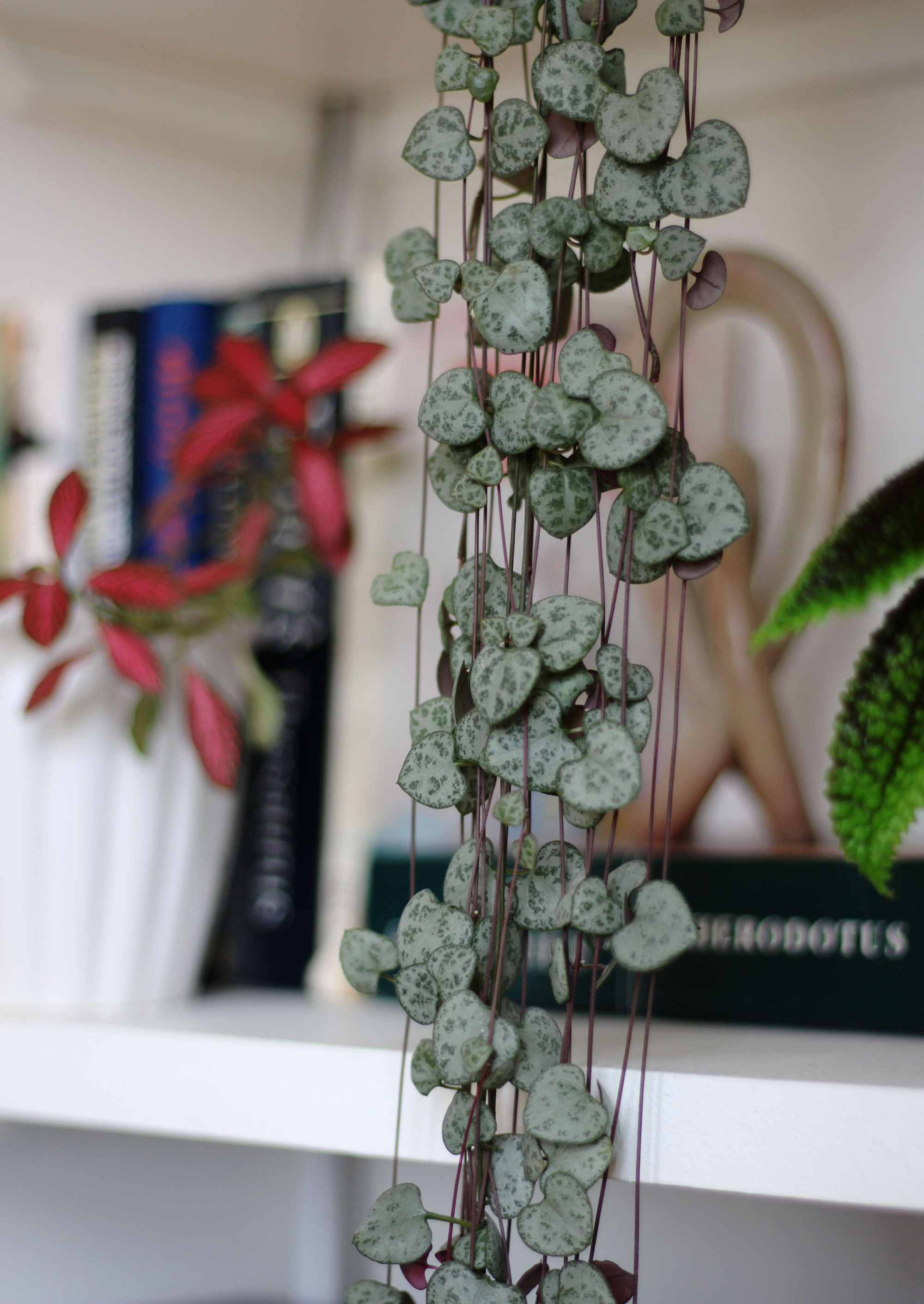
One of the best low-maintenance indoor plants, String of hearts is extremely easy to look after being very tolerant of shade and pretty undemanding too. This delicate trailing plant features pairs of tiny heart-shaped leaves that are silver-grey with a rose-pink underside. Just like a succulent, it stores water in its long stems, and these can reach up to six and a half ft (2m) long. Don’t worry if they become straggly overtime, just give them a trim during summer months and they will soon bush out. As a result, this plant looks stunning on a shelf or popped into a hanging planter above the stairs or window.
‘Want to give it an occasional boost? – then mist with a water spray and pop by a window for a few hours in the morning or evening,’ add Greg and Morag Hill.
10. Chinese Evergreen
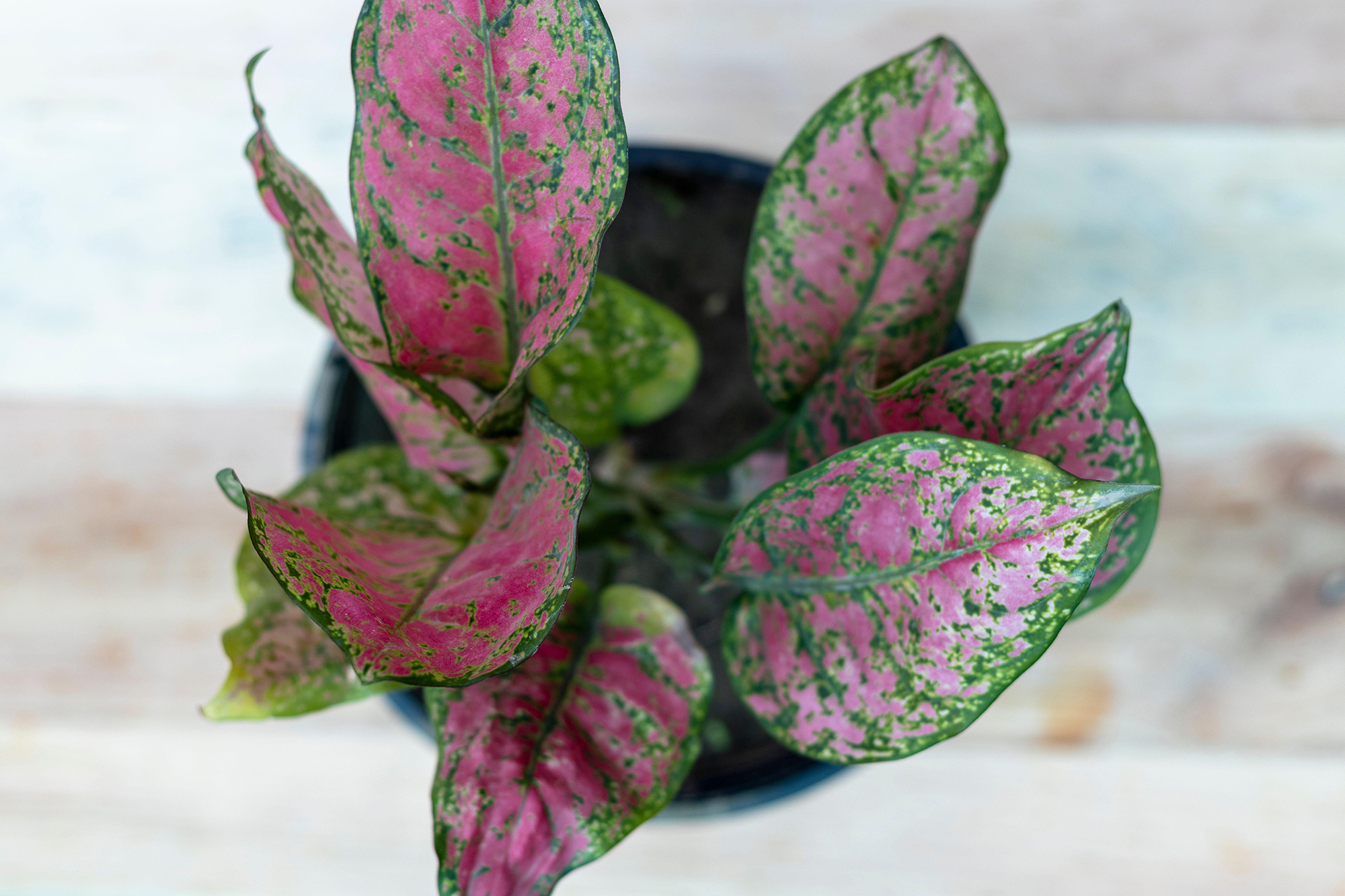
If you are after an easy-grow plant with tons of decorative foliage, then these are for you. With so many varieties on offer, in fantastic shades of green, lime, pink and bronze, you’ll soon be curating your own to-die-for collection. Ranging from plain green leathery leaves through to plants with captivating spotted and striped foliage, they make a stunning display. They are also a great choice of indoor low light plants, too.
‘The Aglaonema Pink Start is a gorgeous, rare plant that will thrive easily in your home,’ says Mark Lawlor of Happy Houseplants. ‘Tolerant of low light conditions and easy care they are the perfect plants for the beginner but attractive collector plants for more experienced growers.’
Native to the tropical and sub-tropical regions of Asia and New Guinea, these tropical plants love warm, humid and bright conditions. They are also said to have air-purifying properties capable of removing harmful toxins such as Benzene and Formaldehyde, which can be found in many home furnishings.
What is the easiest indoor plant to care for?
The Snake plant or sansevieria has to be the most undemanding house plant out there. It will survive in practically any position; bright or shady needs very little water and the occasional liquid feed. Eliza Banks, founder of The Sill says, ‘The easiest way to kill this plant is to overcare for it.’
Air plants are also easy to care for and great for beginners, although make sure you know how to water an air plant to keep it happy and healthy.
What is the fastest plant to grow indoors?
‘Pothos is a creeper that grows relatively quickly anywhere between 12-18 inches (30-45cm) every month, as long as it is provided with optimal conditions that include the appropriate temperature, adequate watering regime, and proper lighting,’ says Mike Smith from Cutting Edge Plants. ‘As a tropical plant, pothos needs a temperature between 75-80°F and a humidity level above 70% to grow exponentially. If the temperature drops below 70°F, their growth will slow down.’
Which is the most hardy houseplant?
The drought tolerant Dracaena or Dragon tree is a top contender for most hardy indoor plant. Capable of surviving on very little water, they are happy at room temperature, place in a bright spot but away from the sun’s glare.
Sign up to the Homes & Gardens newsletter
Design expertise in your inbox – from inspiring decorating ideas and beautiful celebrity homes to practical gardening advice and shopping round-ups.

Journalist Jill Morgan has spent over 20 years writing and editing gardening, interior and property features. Titles she has worked on include The English Home, House Beautiful, Ideal Home, Houzz and Modern Gardens and she writes regularly for H&G as a Contributing Editor. Whilst she is a dab hand at renovation projects and DIY, she is happiest when out digging in the garden or planning a new border.
-
 This simple marble hack elevates my budget-friendly wooden kitchen countertops and prevents the dreaded water damage for way less than you’d think
This simple marble hack elevates my budget-friendly wooden kitchen countertops and prevents the dreaded water damage for way less than you’d thinkThis design trick looks expensive, solves a problem, and was the easiest decision I made during my kitchen reno
By Charlotte Olby Published
-
 Emily Blunt gifted Cillian Murphy this $545 pillow – she's 'obsessed' with these luxury pillows, and frankly, so are we
Emily Blunt gifted Cillian Murphy this $545 pillow – she's 'obsessed' with these luxury pillows, and frankly, so are weThe Oppenheimer stars sleep on this ultra-luxe goose down pillow – here's why we love it – plus our affordable alternatives from $35
By Sophie Edwards Published